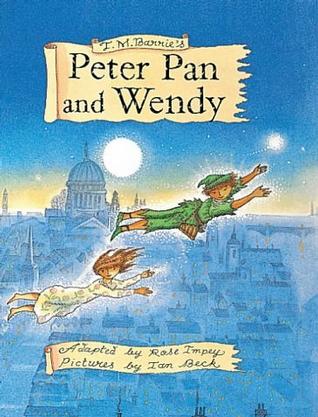### Who Was Peter Pan: The Enigmatic Boy Who Never Grew Up
#### Introduction to Peter PanPeter Pan is one of the most iconic characters in children's literature, captivating audiences for over a century. But who was……
#### Introduction to Peter Pan
Peter Pan is one of the most iconic characters in children's literature, captivating audiences for over a century. But who was Peter Pan? This question opens the door to a rich tapestry of storytelling that explores themes of childhood, adventure, and the bittersweet nature of growing up.
#### The Origins of Peter Pan
The character of Peter Pan was created by Scottish author J.M. Barrie. He first appeared in Barrie's 1902 novel "The Little White Bird" and later became the central figure in the 1904 play "Peter Pan, or The Boy Who Wouldn't Grow Up." Barrie's inspiration for Peter Pan came from his interactions with the Llewelyn Davies boys, particularly the youngest, Michael. The character embodies the spirit of eternal youth, a desire to escape the responsibilities of adulthood, and the magic of childhood imagination.
#### Who Was Peter Pan in Literature?

In literature, Peter Pan is depicted as a mischievous, adventurous boy who lives in the magical world of Neverland. He can fly, thanks to the power of fairy dust, and is often accompanied by his loyal companion, Tinker Bell. Peter is known for his daring escapades, often battling the villainous Captain Hook and his crew of pirates. His refusal to grow up symbolizes the innocence and freedom of childhood, making him a beloved figure among both children and adults.
#### The Themes of Peter Pan
Who was Peter Pan is not just about the character himself; it also delves into deeper themes. The story raises questions about the nature of growing up and the inevitable loss of innocence. Peter's adventures in Neverland serve as a metaphor for the joys and challenges of childhood. The character's struggle against the passage of time resonates with many, highlighting the universal desire to hold onto youth and the fear of adulthood.
#### The Cultural Impact of Peter Pan

Since its inception, Peter Pan has had a profound impact on popular culture. The story has been adapted into numerous films, stage productions, and even ballets. Disney's animated version, released in 1953, introduced Peter Pan to a new generation and solidified his status as a cultural icon. The character has inspired countless merchandise, theme park attractions, and even academic studies.
#### Peter Pan in Modern Context
In contemporary discussions, Peter Pan has also become a symbol of the "Peter Pan Syndrome," a term used to describe adults who refuse to grow up and take on responsibilities. This phenomenon invites reflection on the pressures of modern society and the complexities of adulthood. The character of Peter Pan continues to resonate, prompting discussions about the balance between maintaining a sense of wonder and facing the realities of life.
#### Conclusion: The Legacy of Peter Pan

So, who was Peter Pan? He is more than just a fictional character; he represents the eternal child within us all. Through his adventures, we are reminded of the importance of imagination, the value of friendship, and the bittersweet nature of growing up. Peter Pan encourages us to cherish our childhood memories while embracing the journey of life, making him a timeless figure in literature and beyond.
In summary, Peter Pan is a multifaceted character whose story transcends generations. His adventures in Neverland continue to inspire and entertain, prompting us to reflect on our own experiences of childhood and adulthood. Whether through literature, film, or cultural discourse, the legacy of Peter Pan endures, reminding us of the magic that exists in both youth and the memories we carry into adulthood.